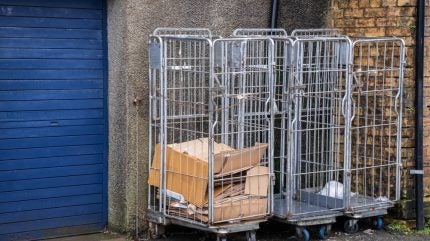
As the UK’s Extended Producer Responsibility (EPR) scheme edges closer to implementation, retailers across the nation are bracing for a seismic shift in the economics of packaging.
Designed to place the full cost of recycling and waste disposal onto producers, EPR marks one of the most significant regulatory developments in decades for British retail.
While the intention is to drive sustainability and reduce packaging waste, the financial implications are already sending ripples through the industry.
Marks & Spencer recently announced it expects to incur up to £40 million annually in EPR-related costs. The high street giant, known for its early commitment to environmental initiatives, is trialling recyclable paper packaging on its bestselling chocolate bar in an attempt to mitigate long-term liabilities under the scheme.
But M&S is far from alone—retailers large and small are grappling with how to absorb or offset these new costs without sacrificing consumer value.
What is EPR, and why now?
Extended Producer Responsibility is not a new concept. The principle, adopted in various forms across Europe and beyond, holds producers accountable for the end-of-life management of their products.
In the context of packaging, that means companies must now foot the bill for the collection, recycling, or disposal of materials they place on the market.
In the UK, the new EPR scheme is due to be rolled out in phases, starting with data reporting requirements before full financial responsibilities begin in October 2025.
Administered by the Environment Agency and overseen by the Department for Environment, Food and Rural Affairs (Defra), the programme is expected to raise an estimated £2 billion annually.
These funds will go directly to local authorities to support household waste collection and recycling.
Historically, local councils have borne the brunt of packaging waste management. Under EPR, producers—including brand owners, importers, and distributors—will be required to pay fees based on the volume, weight, and recyclability of their packaging.
The more difficult the material is to recycle, the higher the fee.
For many retailers, the challenge is twofold: they must not only budget for the direct financial burden but also reassess the materials used across their product ranges. In effect, EPR is forcing a re-evaluation of packaging at every level—from sourcing to shelf.
The financial and operational impact
Retailers are sounding the alarm about the strain EPR will place on profit margins already thinned by inflation, rising energy prices, and shifts in consumer behaviour. For large businesses, annual compliance costs could range from tens to hundreds of millions of pounds.
For smaller firms, the administrative and financial burden may prove existential.
The British Retail Consortium (BRC), representing over 170 major retailers, has voiced concerns that the costs may ultimately be passed on to consumers.
“While retailers are committed to improving recycling rates, this policy needs to be implemented in a fair and transparent way,” said Andrew Opie, Director of Food and Sustainability at the BRC. “There is a real risk that EPR costs will be disproportionately high and not ring-fenced effectively for environmental outcomes.”
Retailers are now investing heavily in packaging audits, sustainability consultants, and supplier engagement to ensure their packaging portfolios are EPR-compliant. This includes shifting away from hard-to-recycle materials such as polystyrene and black plastic, and embracing alternatives like mono-material plastics, paper, or compostable options.
Yet even sustainable choices are not always straightforward. Paper packaging, while often perceived as eco-friendly, can carry its own environmental toll if not sourced responsibly.
Retailers must weigh these trade-offs carefully, factoring in everything from carbon footprints to supply chain resilience.
Innovation and adaptation in response to regulation
Forward-thinking retailers are seeing EPR as more than a regulatory hurdle—it’s a catalyst for innovation.
Marks & Spencer’s decision to trial paper packaging on its Vanilla Fudge Bar is part of a wider strategy to remove 1 billion plastic packaging units by 2027. Meanwhile, Tesco, Sainsbury’s, and Co-op have been trialling refillable and reusable packaging models that could significantly cut packaging volumes altogether.
Tech innovation is also playing a role. Smart packaging technologies, such as RFID and QR-coded labels, are being tested to improve traceability and material sorting efficiency in recycling streams.
Elsewhere, collaborations between retailers and start-ups are driving the development of biodegradable films, edible packaging, and water-soluble materials.
Retailers are also increasingly working with third-party compliance schemes and Producer Responsibility Organisations (PROs) to manage EPR-related obligations.
These entities offer services such as data management, fee forecasting, and liaison with regulators, allowing retailers to focus on their core business while ensuring they remain compliant.
Looking ahead: long-term sustainability or short-term strain?
The introduction of EPR in the UK represents a watershed moment in environmental policy and retail accountability. While the cost implications are steep, the potential benefits for the environment and the circular economy are equally profound.
A properly funded and transparent system has the power to dramatically reduce waste, improve recycling infrastructure, and incentivise sustainable product design.
However, for EPR to succeed, trust and transparency will be essential. Retailers must be confident that the funds collected are used effectively and efficiently. Clear communication between government, industry, and consumers will also be key in managing expectations and avoiding greenwashing.
Ultimately, EPR will reward those who lead with innovation and responsibility. For retailers willing to adapt, it offers a chance not only to comply with regulation but to forge a more resilient and sustainable future.
For others, the cost of inaction—or slow action—may be higher than they expect.



